A Review of the Olympus STF-8 Macro Twin Flash
![]()
Last year, Olympus Singapore loaned me a pre-launch unit of their new STF-8 Macro Twin Flash, together with their OM-D E-M1 and M.Zuiko Digital ED 60mm f/2.8 Macro for a test-run in the field. I’ve had the set for about a week — it was easy to use and the results were pretty good, although it took some time for me to get used to focusing using the LCD.
The Purpose of a Twin Flash
Most major camera brands produce twin-flash systems for macro photography, but many macro photographers are still able to get great results with just a single flash. So… what’s the use of a twin flash then? Here are some of the minute differences.
Softer shadows (with proper diffusion)
Even with elaborate diffusion, single flash systems would have difficulty filling the shadows underneath the subjects — especially those with broad bodies. In twin flashes, the light usually approaches the subject from the side, which leads to much softer shadows.
Distributed lighting
With the light source from 2 different spots, the light is naturally more distributed, as opposed to having it from a single spot.
Flexibility for creative lighting
Most twin flash systems allow the individual flashes to be detached, so that they can be placed at odd angles or even behind the subject. A great convenience!
MACRO TWIN FLASH SYSTEMS COMPARED
I have used most of the macro twin flash systems in the field before, so here’s a quick overview of the differences that a macro photographer should know of.
![]()
Note that for the Nikon SB-R200, they can only be triggered wirelessly by the onboard flash of some Nikon camera bodies, or with the Nikon SU-800. Specifications above are for each flash unit excluding any mounts or arms, and more than 2 units can be used together.
It is also worth noting that Yongnuo has recently launched a Canon MT-24EX knock-off, the Yongnuo YN-24EX. Looks identical but at just 20% of the original’s price! Several users had reported a higher failure rate of this flash, but it is still worth checking it out.
The Biggest Problem with Most Macro Twin Flash Systems
Most of the above twin-flash systems come with a custom ring attached to the front of the lens to mount the flashes. They are really convenient, but the problem arises when the flashes are mounted too close to the subjects, with little space in between to insert any effective light diffusion. This means that the ring that comes with Nikon’s R1 or R1C1 should never be used since they use custom mounts. The rings for Canon and Olympus have cold-shoe mounts, so that allows us to extend the height of the flash and distance it further away from the subject for better light diffusion.
To work around this issue, many macro photographers use flexible arms to mount the flashes. There are several options available, but that’ll be another topic altogether.
For the photos in this post using the Olympus STF-8, I have installed tiny flash ballheads at the base of each flash so that they are at least 2 inches further away from the diffuser. It results in really soft and pleasing highlights on the subject.
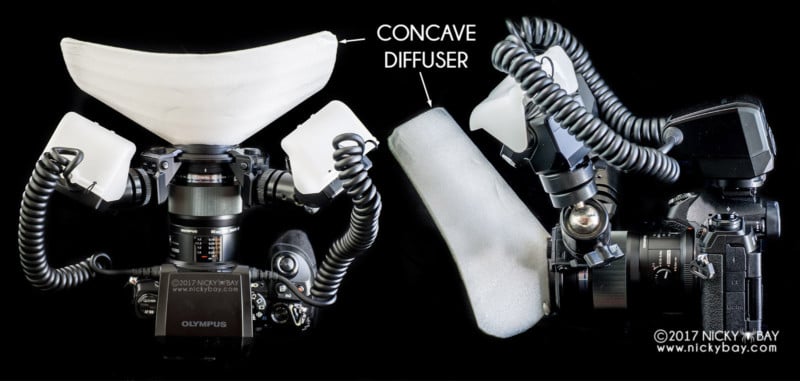
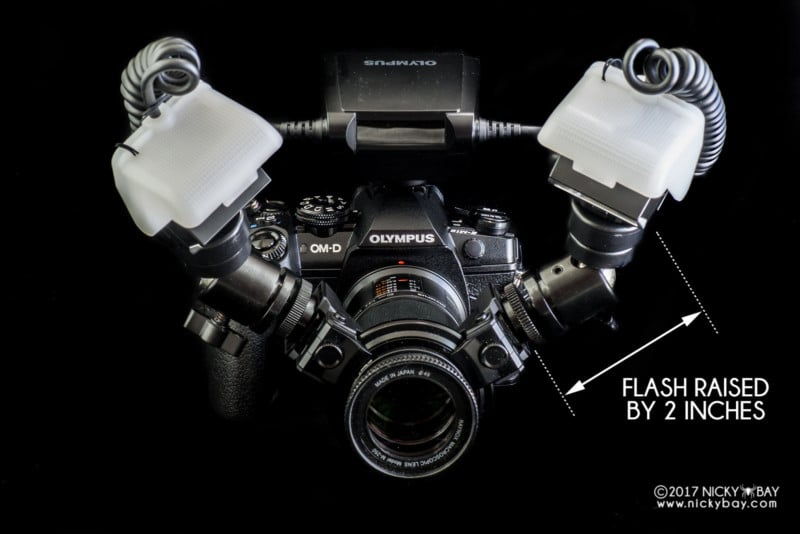
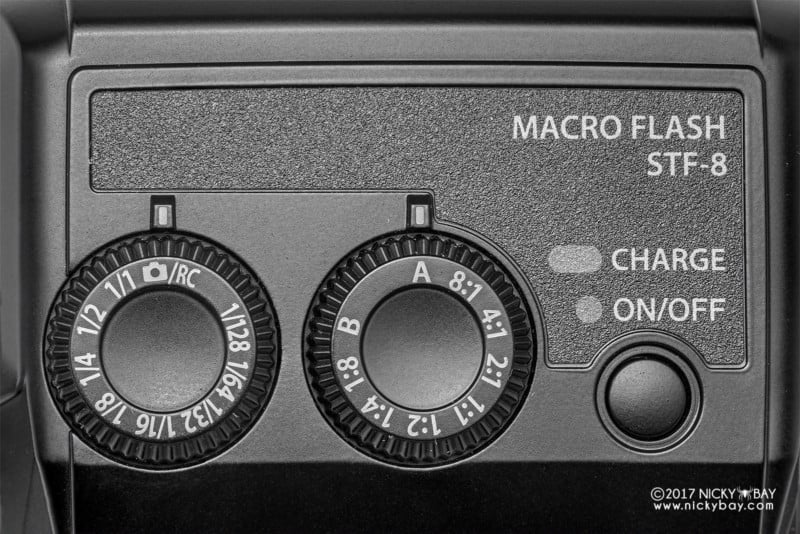
Note: The photos above show the latest OMD-EM1 Mark II, but the sample photos below were taken with the OMD-EM1 Mark I. The default diffuser caps were not used.
Sample Photos from a Field Trip
As I had the system for just a week, I made 2 short hikes to Durian Loop and Zhenghua Park in Singapore to try the system out. I have a lot more photos, but these stood out and showcases the benefits of a twin-flash system. All photographs in this series were taken with the OMD-EM1 Mk1 with M.Zuiko Digital ED 60mm f/2.8 Macro and Raynox DCR-250, lighted with the STF-8 Macro Twin Flash and diffused with a DIY diffuser.
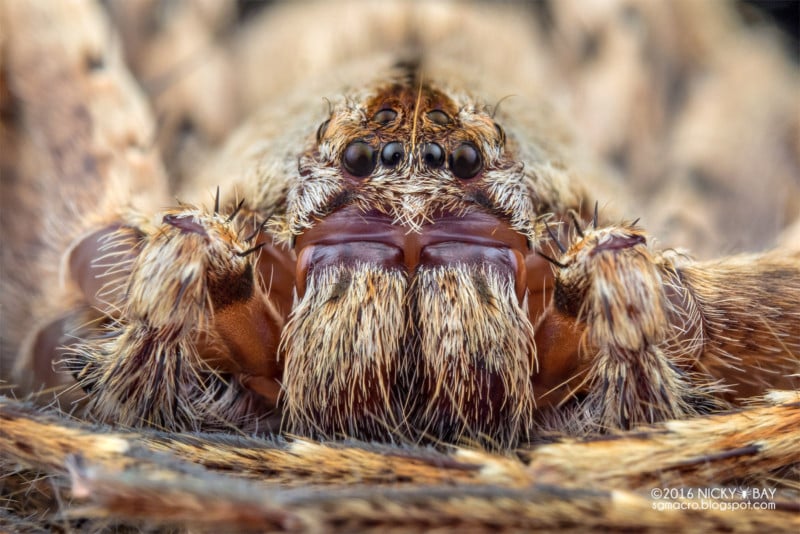
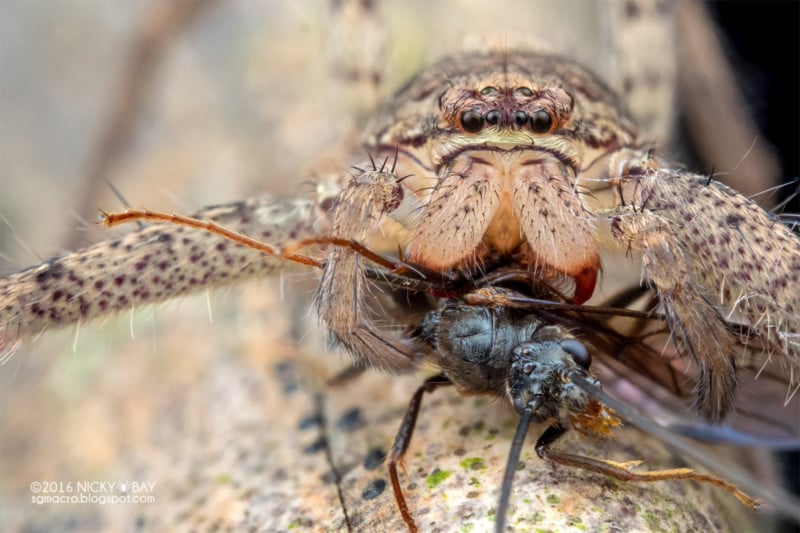
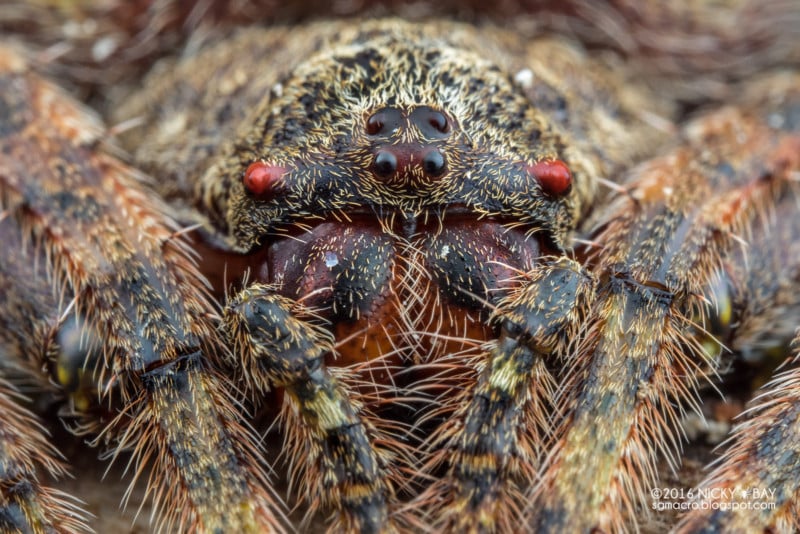
Even in orb weavers, there was no loss of detail in the hairs. This is largely contributed by good light diffusion, and partly by the camera sensor.
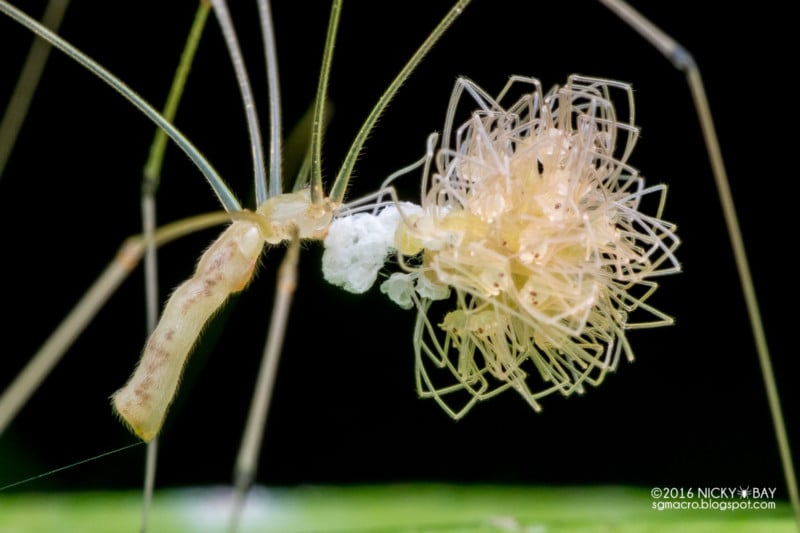
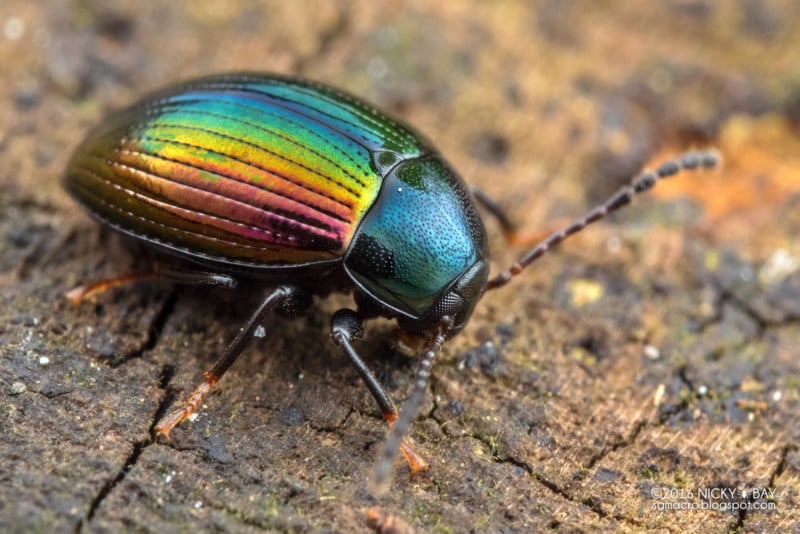
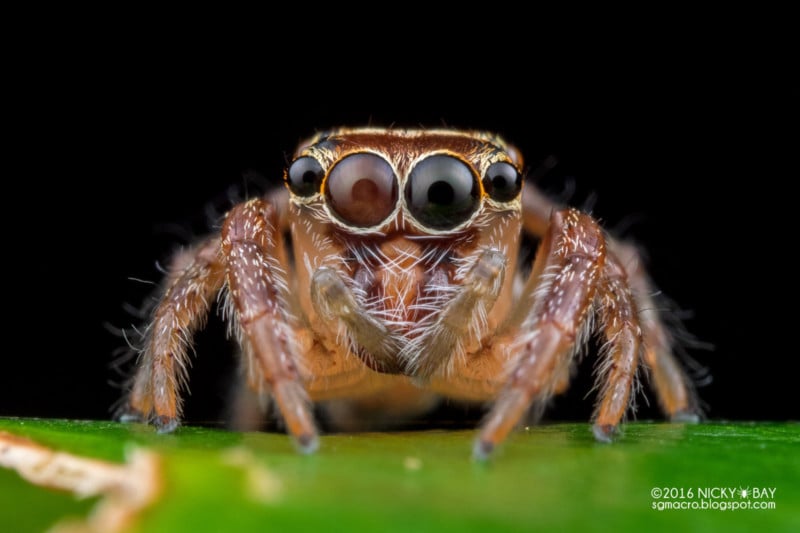
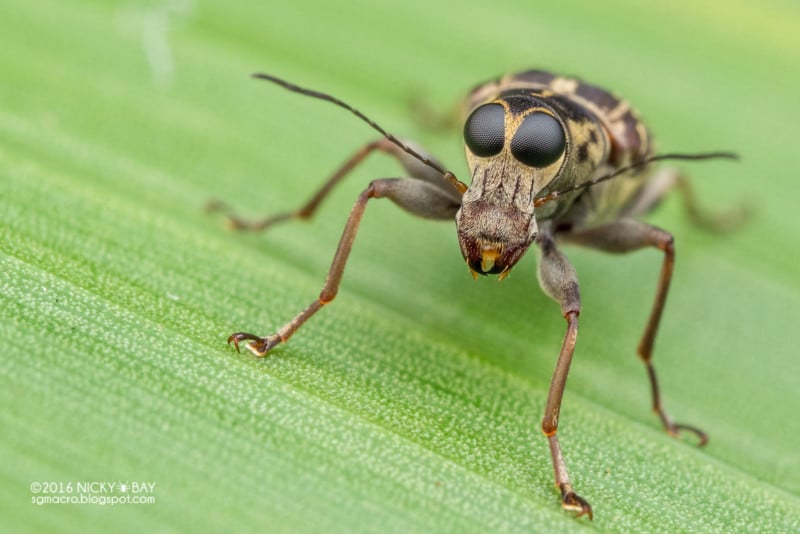
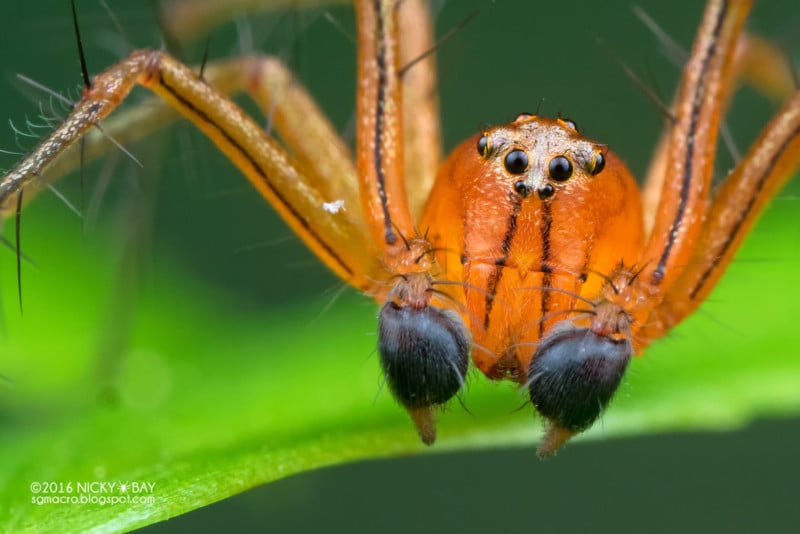
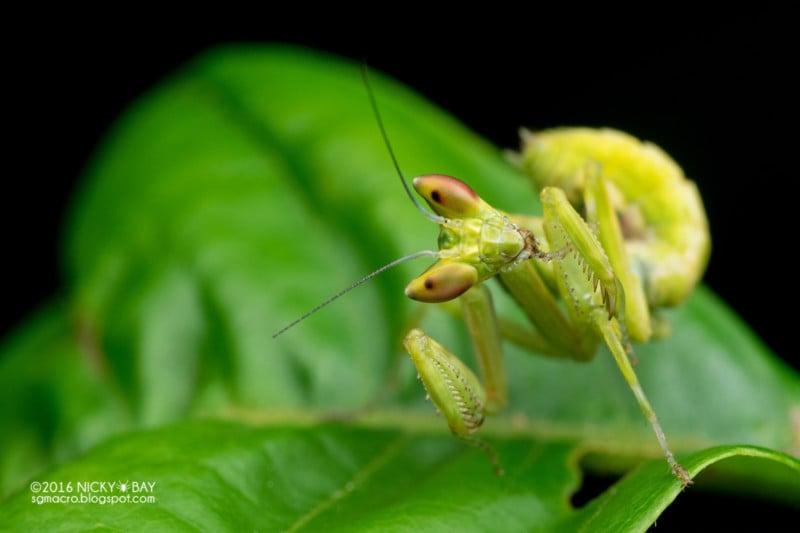
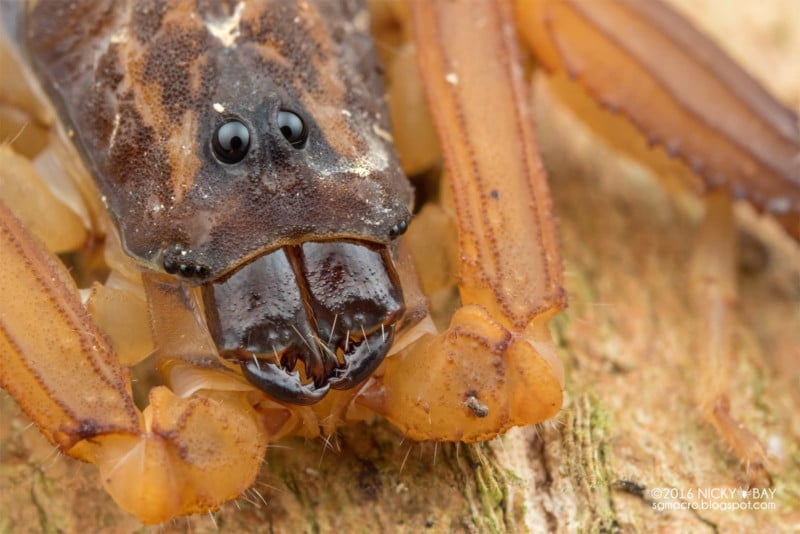
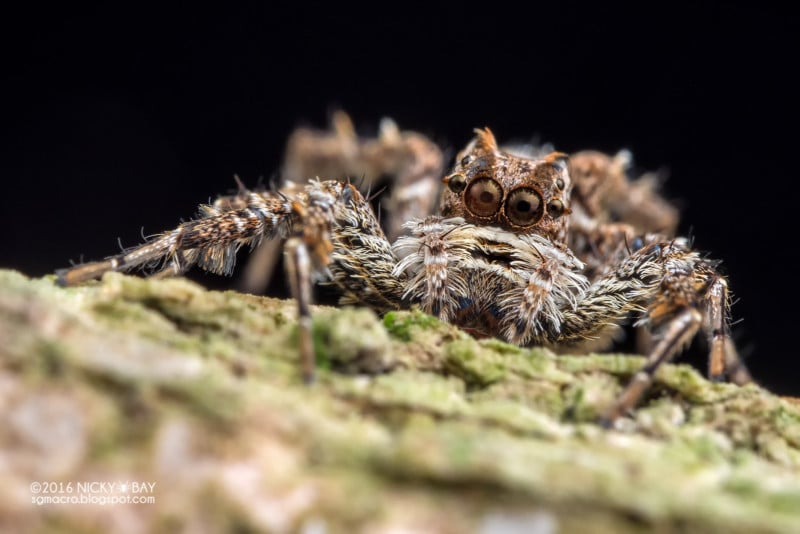
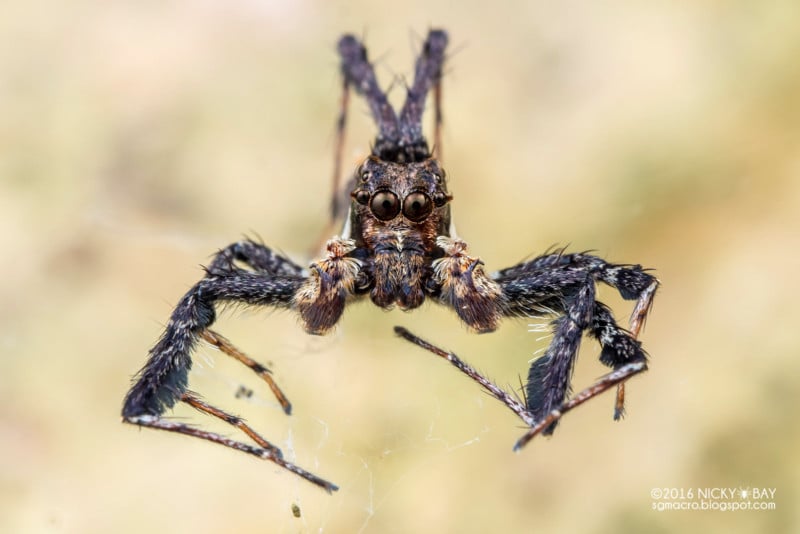
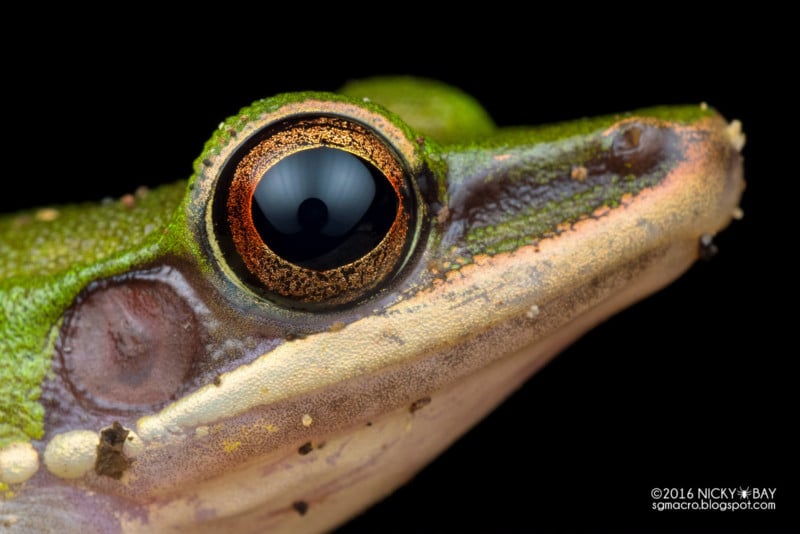
Conclusion
The Olympus STF-8 Macro Twin Flash is the first macro twin-flash system for Micro Four Thirds (M4/3) systems, and looks like a mini Canon MT-24EX. Its key selling point is its compactness and light weight, which is in line with what we expect of M4/3 systems. It is also splash-proof to lessen your worry in wet conditions. I only wish that it had a higher guide number which would be helpful for larger subjects.
The default cap diffusers are definitely insufficient. A DIY concave diffuser needs to be built onto the tip of the lens, and the twin flashes need to be raised above its default mounts. With that, you can be confident of well diffused lighting in your macro photographs.
About the author: Nicky Bay is a macro photographer based in Singapore. You can find more of his work and follow along with his adventures through his website and Flickr photostream. This article was also published here.